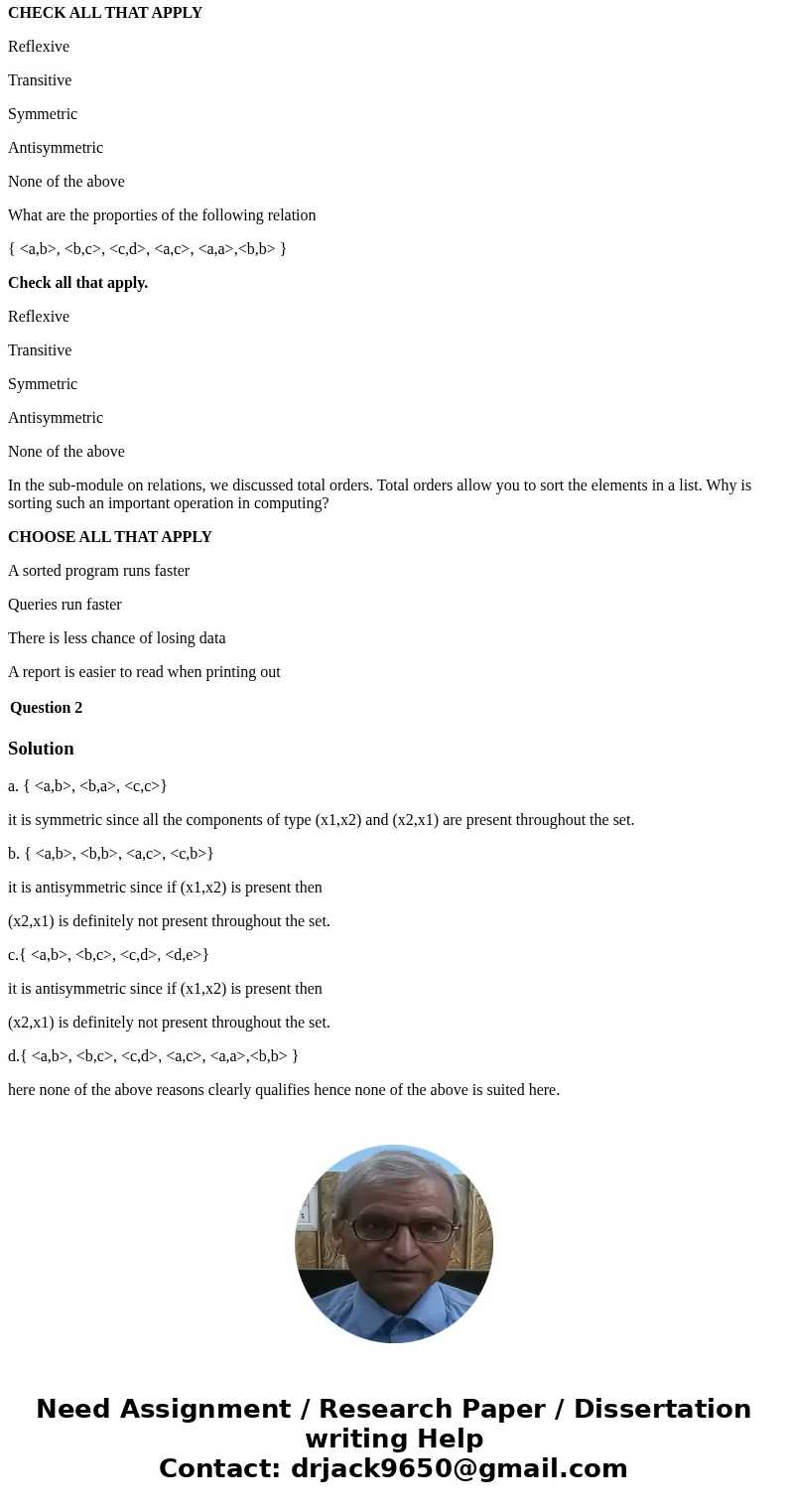Please answer each question in its entirity Select ALL THAT
Please answer each question in its entirity. Select ALL THAT APPLY FOR EACH QUESTION.
What are the proporties of the following relation
{ <a,b>, <b,a>, <c,c>}
CHECK ALL THAT APPLY
Reflexive
Transitive
Symmetric
Antisymmetric
None of the above.
What are the proporties of the following relation
{ <a,b>, <b,b>, <a,c>, <c,b>}
CHECK ALL THAT APPLY
Reflexive
Transitive
Symmetric
Antisymmetric
None of the above.
What are the proporties of the following relation
{ <a,b>, <b,c>, <c,d>, <d,e>}
CHECK ALL THAT APPLY
Reflexive
Transitive
Symmetric
Antisymmetric
None of the above
What are the proporties of the following relation
{ <a,b>, <b,c>, <c,d>, <a,c>, <a,a>,<b,b> }
Check all that apply.
Reflexive
Transitive
Symmetric
Antisymmetric
None of the above
In the sub-module on relations, we discussed total orders. Total orders allow you to sort the elements in a list. Why is sorting such an important operation in computing?
CHOOSE ALL THAT APPLY
A sorted program runs faster
Queries run faster
There is less chance of losing data
A report is easier to read when printing out
| Question 2 |
Solution
a. { <a,b>, <b,a>, <c,c>}
it is symmetric since all the components of type (x1,x2) and (x2,x1) are present throughout the set.
b. { <a,b>, <b,b>, <a,c>, <c,b>}
it is antisymmetric since if (x1,x2) is present then
(x2,x1) is definitely not present throughout the set.
c.{ <a,b>, <b,c>, <c,d>, <d,e>}
it is antisymmetric since if (x1,x2) is present then
(x2,x1) is definitely not present throughout the set.
d.{ <a,b>, <b,c>, <c,d>, <a,c>, <a,a>,<b,b> }
here none of the above reasons clearly qualifies hence none of the above is suited here.


 Homework Sourse
Homework Sourse